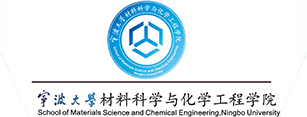报告时间:2014年9月5日(星期五)14:00
报告地点:龙赛理科楼南楼202报告厅
报告人:Ezat Khosravi教授
报告人简介:
Dr. Khosravi did his Ph.D. in polymer science, working on polymer transformation reactions with Dr. E.A. Boucher (Sussex University, UK, 1982). He stayed on at Sussex for a further year as a post-doctoral researcher with Prof. N.C. Billingham, working on ester exchange reactions in acrylates developing a sealant for commercial applications. He joined the polymer group at Chemistry Department, Durham University, UK, in 1987 where he is now a Reader in Polymer Chemistry.He is a polymer Chemist with research interests ranging from well-defined polymerisation chemistry to novel polymers and biopolymers
报告摘要:
The synthesis and development of smart polymers that can respond to external stimuli such as pH, temperature and light has been the main focus of current research. The temperature responsive materials with low critical solution temperatures (LCST) in the physiological range (30-40 oC) attract much attention due to their potential biomedical applications and drug delivery systems. Poly(N-isopropyl acrylamide) (PNIPAM) has been the most studied temperature responsive homo-polymer exhibiting LCST in water around 32 oC which is close to the lower end of the physiological range.1,2 The efforts have been made to tune the LCST of PNIPAM to around 37 oC by variation in hydrophilic or hydrophobic co-monomer content, for different biomedical applications.
The lecture presented here discusses the synthesis and characterisation of potentially biocompatible and biodegradable smart polymeric materials exhibiting LCST within 38-40 oC, known as fever temperature. It will first demonstrate the synthesis of a novel temperature responsive water-soluble glycopolymer via copper wire-catalysed click-polymerisation with an LCST at 39 oC.3 Poly(N-vinyl caprolactam) (PNVCL) also exhibits an LCST in aqueous solution. PVNCL prepared by classical free radical polymerisation exhibits an LCST at 33 oC. The lecture will then demonstrate that the application of RAFT for the polymerisation of N-vinyl caprolactam using a range of custom synthesised RAFT agents will produce PNVCL exhibiting LCST within the range of 38-40 oC. The investigation of the cloud point of the aqueous solutions of these smart materials by optical microscopy and UV-Vis spectroscopy will also be discussed.
欢迎广大师生踊跃参加!

